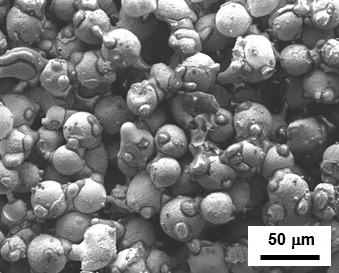Researchers at the University of Lorraine in France have been working on new methods of creating powdered alloys.
The problem being solved is that today’s commercial 3D printers have a severely restricted set of printing materials. Meanwhile, the rest of the manufacturing world has an enormous selection of materials with properties to match almost any set of requirements. The issue is how to make new 3D printing materials that offer additional properties.
The researchers discovered the introduction of complex metal alloys (CMA’s) in a powder-based 3D printing process could provide advantages, particularly when the CMAs were quasicrystals. Wait, what’s a “quasicrystal”? They explain:
CMAs are defined as intermetallic compounds with large unit cells, containing several tens up to several thousands of atoms. Inside the unit cell, atoms usually form geometrical cluster units of high symmetry, for example icosahedral (five-fold symmetry) or decagonal (ten-fold symmetry) clusters. These clusters are interconnected by so-called glue atoms to develop a 3D structure. There has been a renewed interest in such complex compounds since the discovery of quasicrystals (QCs) by Dan Shechtman in 1982. QCs can be viewed as the ultimate degree of complexity in CMAs, with a unit cell of infinite dimension and the loss of the translational invariance characterizing conventional crystals.
Ok. But how does it work? Basically they use a two-stage process involving 3D printing a porous object and then infusing it with a second material. They’ve discovered, for example, they can reduce the density of a print by printing a polymer-QC porous mix and then infusing it with a standard alloy.
That’s not all. There were additional experiments performed using QCs to produce materials that reduce friction, reduce wear and provide greater sealing capability. There’s far more in their paper than we can comment on here, so we recommend checking it out at the link below.
We’re interested in this because we believe the future of industrial 3D printing will largely focus around innovations in materials. Objects can be printed today – but can they be made in the correct materials for the application?
Via IOPScience


